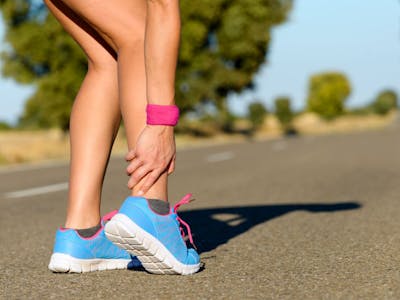
The terms sprain and strain are typically used interchangeably to describe common musculoskeletal injuries that occur around the joints as a result of a variety of activities. Common causes include improper lifting techniques, repetitive movements at work, home or school and traumatic injuries (e.g., abrupt falls with twisting or pivoting movements, etc.).
Sprain/Strain Symptoms
The common symptoms of sprains and strains are similar, which is how they are so easily confused.
Sprain
- Bruising
- Pain around the injured joint
- Edema (swelling)
- Limited flexibility and range of motion due to pain
Strain
- Muscle spasms
- Pain around the injured joint
- Edema (swelling)
- Limited flexibility and range of motion due to pain
The major difference with the symptoms is that there is bruising around the injured joint on a sprain, and with a strain, muscle spasms occur.
Sprains and Strains Are Different Injuries
A sprain is an over-stretching or tearing of one or more ligaments. Ligaments are crisscross bands of fibrous tissue that connect bones together and stabilize joints.
Sprains are classified as:
- Grade 1 (mild): slight over-stretching and a little damage to the ligament fibers.
- Grade 2 (moderate): partial tearing of the ligament with abnormal looseness (laxity) in the joint when moved in certain ways.
- Grade 3 (severe): Complete ligament tear, which causes severe instability and makes the joint nonfunctional.
A strain is an over-stretch or tear to a muscle or tendon. Tendons are dense fibrous connective cords of tissue that attach muscles to bones or structures and initiate movement.
Treatment for Sprains and Strains
Directly after a sprain or strain, control the swelling with RICE for 24 to 48 hours:
- Rest the injured joint/extremity and use a sling for an arm or shoulder injury or crutches for a leg or foot injury.
- Ice for 20 minutes every hour.
- Compress with an elastic Ace bandage or brace for an ankle or knee, a splint for an injured finger or buddy-taping for an injured toe.
- Elevate above the heart, if possible.
An over-the-counter NSAID (non-steroidal anti-inflammatory drug) (such as Tylenol and or Motrin) may help with reducing the swelling and pain/ pressure relief. After this home treatment, be sure to have the injury evaluated by your doctor to rule out a fracture or a severe sprain or strain.
Most mild sprains and strains heal with a few days to a week. Seeing a physical therapist can also help you regain range of motion. Your physical therapist can also show you injury prevention techniques to help prevent future sprains and strains.
If your symptoms don't improve within a couple of days, or you experience any of the following, see your doctor to have it immediately evaluated:
- An audible "popping" sound with the injury
- Pain and swelling that gets worse over time
- Fever or chills
- Difficulty standing or walking without pain
- Limited flexibility and range of movement around the injured joint
- Numbness or tingling
- Joint/extremity deformity or signs of instability
Moderate sprains and strains may require bracing for a period of time, followed by physical therapy to help regain normal function and range of motion. Severe sprains and strains may require surgery to repair the tear, followed by physical therapy to rehabilitate the injury.
